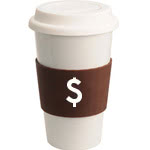Rethink Your Billing to Get the Most out of Your Customers

In his book Business Agility, Michael Hugos says: “Opportunities to make money by being responsive have exploded. There are far more ways to use responsiveness to attract customers than there are ways to use efficiency and low prices. This is because there are so many different kinds of customers, and each is looking for slightly different mixes of products and services. Constantly changing environments and customer needs enable responsive customers to offer continuously evolving mixes of products and services.”
This simple concept helps us rethink what the basic concept of billing means to an organization. When we evolve basic billing concepts from simple order to cash processes and being supporting activity to cash process, even simple products–like paper cups–create opportunities for innovation and new sources of revenue.
Hugo’s book uses the concept of the “Value Added Paper Cup” to illustrate the many ways that simple products can spin off new sources of activity-based revenue. It started when Hugos was CIO of a food-service disposables company. Commodity food-service disposables don’t have a great profit margin, and, according to Hugos, “it gets lower every year.”
Hugos was given the task of using information technology to make his products more useful and more valuable to his customers. From that basic objective, his IT department built a program of dozens of value-adding services that could be added to every order by the sales team.
One of the enablers of the Value Added Paper Cup strategy was billing. Hugos distinguished between the actual item or service (the paper cup) and the information component.
The paper cup is easily copied, is a commodity and has a very low profit margin.
The information component helps customers use it more efficiently, is customized to each custom and generates much higher profit margins. Sample activity-based information services that increased the profit margin of every paper cup sold included online ordering, customization of labels to expedite a customer’s inventory process, custom invoicing formats, injection of GL codes into invoice line items and even an online dashboard that displayed a customer’s order history, usage patterns and purchasing trends.
According to Hugos, the information component “is where above-market prices and profits are to be found. Through the creative use of the information component, you can wrap any commodity product with a mix of value-added services that make it more useful and for which customers will pay a bit extra.”
When a paper cup–generally a simple static transaction item–is surrounded with custom value-added services, opportunities to use billing as a source of innovation, explode.
Want to read more insider-perspective posts on best practices? Browse our entire archive of blog posts on tips and tricks from software experts by visiting the Industry Insights section of the Business-Software.com blog.





